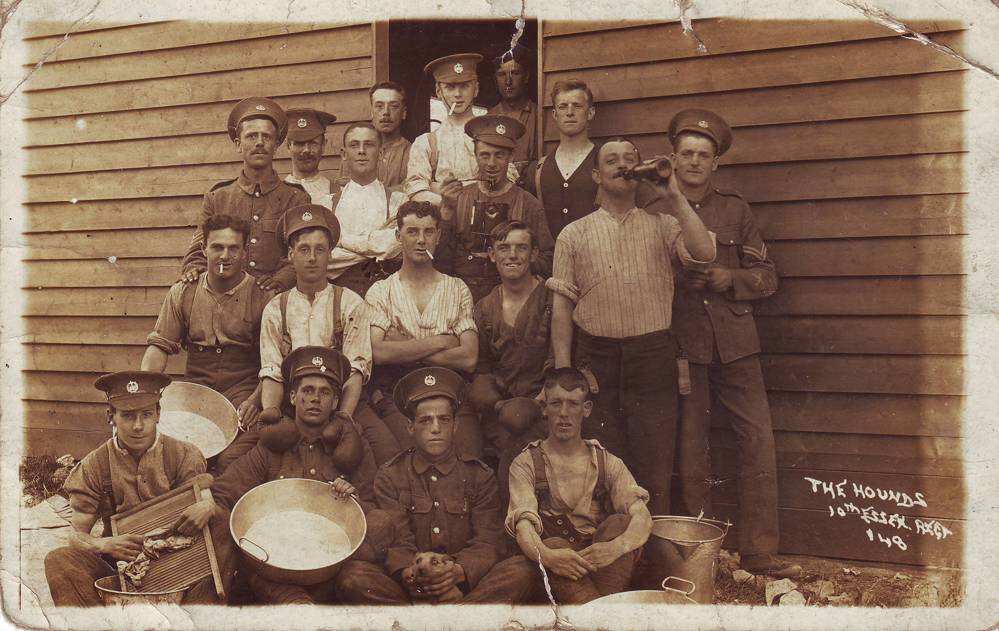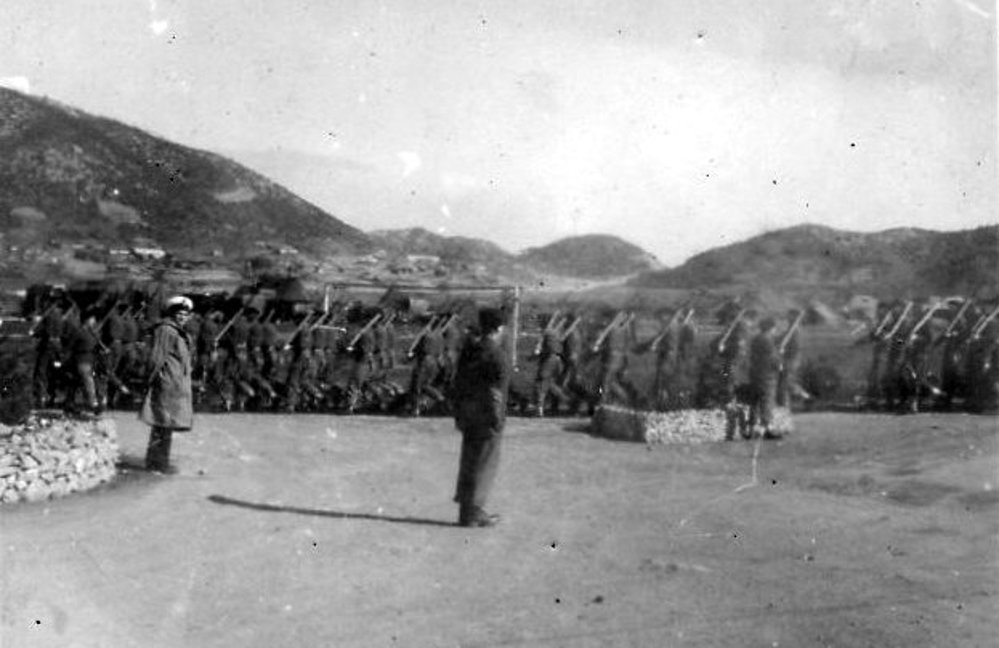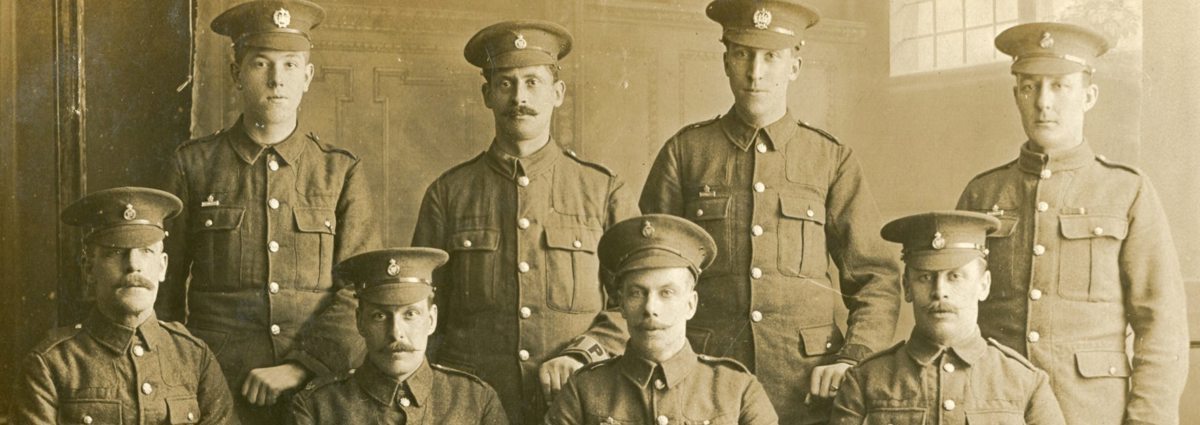Please note: During the Love Parks event on Friday 26 July, parking won’t be available at the museum except for blue badge holders. You can read our list of alternative parking available on our website.
As the threat from Germany increased in the early part of the twentieth century, great expansion of the army was necessary.
Thirty-one battalions of the Essex Regiment were formed, eleven serving overseas with great distinction. In all, no fewer than seventy battle honours were won, ten selected honours being borne on the Queen's Colour.

The Great War
The 1st Battalion served on the Gallipoli Peninsula and in France and Belgium. As part of the immortal 29th Division, it took part in the initial landing on the Peninsula and in all the hard-fought battles that followed. Its record on the Western Front was equally glorious. Of the ten honours emblazoned on the Queen's Colour, the 44th shares with other battalions of the Regiment "Gallipoli", "Somme", "Arras", "Ypres, 1917" and "Cambrai".
The 2nd Battalion was the first in action, moving to France with the 4 Division of the original B.E.F. and taking part in the Retreat from Mons and the Battle of the Marne. Its record throughout the war was unsurpassed. Of the honours on the Queen's Colour, "Le Cateau", "The Marne" and "Ypres, 1915" were gained by the "Pompadours", who also share with other battalions "Ypres, 1917", "Somme, 1916, '18" and "Arras, 1917, '18".th.
The 1/4th, 1/5th, 1/6th and 1/7th Territorial Battalions served with distinction on Gallipoli and in Egypt and Palestine, taking part in many hard-fought engagements with the Turks and gaining ten battle honours for the Regiment. Of the Honours, "Gaza" was won by these Territorial Battalions, who also share "Gallipoli" with the 1st Battalion.
The 9th, 10th, 11th and 13th Special Services Battalions all served in France and Flanders. They claim a worthy share in four of the ten honours carried on the Colours ("Somme, 1916, '18", "Arras, 1917, '18", "Cambrai, 1917, '18" and "Ypres, 1917"), while the 9th and 11th Battalions added the honours "Loos" and "Selle" to the Colours. Lieutenant F.B. Wearne of the 11th Battalion was awarded the Victoria Cross for his conspicuous valour. The 15th Essex also served on the Western Front during the concluding months of the war.
Some 9,000 officers and men of the Essex Regiment died in the 1914-18 War, many having no known grave.
Between the wars
The 1st Battalion soldiered at home, also seeing active service in South Ireland (1919-21) and in Palestine (1937-38), with an early peace keeping tour in the Saarland in 1934 and 1935. The 2nd Battalion served in Malta, Turkey, India, Egypt and the Sudan, seeing active service in Turkey (1920) and on the North-West Frontier of India (1930-1).
In 1913, four silver drums were presented to each regular battalion by the County of Essex. These were added to between the wars by public and private subscription, so that by 1937 the Regiment possessed a still unsurpassed display of silver drums and bugles.
Prior to the last war, the calls of anti-aircraft defence caused the conversion of two Territorial battalions, leaving only the 4th and 5th Essex. These were duplicated in 1939, so that the Regimental order on the outbreak of World War II was 1st Battalion (Egypt), 2nd Battalion (Warley), 1/4th and 2/4th Battalion (TA) (Ilford), 1/5th (TA) (Chelmsford), and 2/5th Battalion (TA) (Colchester). To these were added during the course of the war the 7th, 8th, 9th, 10th, 30th and 70th Battalions.

After World War Two
After the war, the 1st and 2nd Battalions were amalgamated to form the 1st Battalion (44th and 56th), while the need for anti-aircraft units in the re-formed Territorial Army meant that the 4th Battalion was the only remaining Essex Territorial infantry battalion.
From 1953 to 1954, the 1st Battalion served in Korea, before being stationed in Hong Kong, 1954-56 and Germany 1956-58. In Korea, the large numbers of young National Service soldiers from Dagenham brought into use a new Regimental nickname, "The Dagenham Light Infantry"!
Whilst at Dortmund, on 2 June 1958, the 1st Battalion Essex Regiment was amalgamated with the 1st Battalion, Bedfordshire and Hertfordshire Regiment to form the 1st Battalion, The 3rd East Anglian Regiment, (16th/44th Foot). This was a result of the ending of National Service for young men and a policy of reliance on nuclear weapons for national defence.
The new Regiment served in Germany, in the Malayan Emergency, in Northern Ireland, then a pleasant and peaceful posting, before being posted to Berlin soon after the erection of the Berlin Wall. A welcome change was made to an all-Regular Army.
The Royal Anglian Regiment
Whilst in Berlin, the regiments of the East Anglian Brigade were the first to adopt the new policy of forming a "large regiment", the Royal Anglian Regiment on 1 September 1964. The Pompadours became the 3rd Battalion The Royal Anglian Regiment, serving later in Tidworth, Aden, for an Emergency Tour, Aldershot, Cyprus, as part of the United Nations forces, and Germany, as part of the British Army of the Rhine (BAOR).
The 3rd Battalion served a number of tours in Northern Ireland between 1972 and 1992, in both rural and urban areas. It was during an operational tour in Derry/Londonderry in the latter year that the Battalion learnt it was to be disbanded as part of cuts forced on the Army by the government's "Options for Change" paper.
On 5 October 1992, the 3rd Battalion, Royal Anglian Regiment (Bedfordshire, Hertfordshire and Essex), was disbanded at Colchester and its personnel and traditions were passed on to the 1st Battalion of the Regiment.
In all its long and colourful history, The Essex Regiment has never failed in peace and war. It has only one standard in barracks or in battle - the highest. To attain this standard, it must cling at all times to the old, simple ideas that have made the British Army famous in history throughout the world, namely obedience, service and sacrifice.

